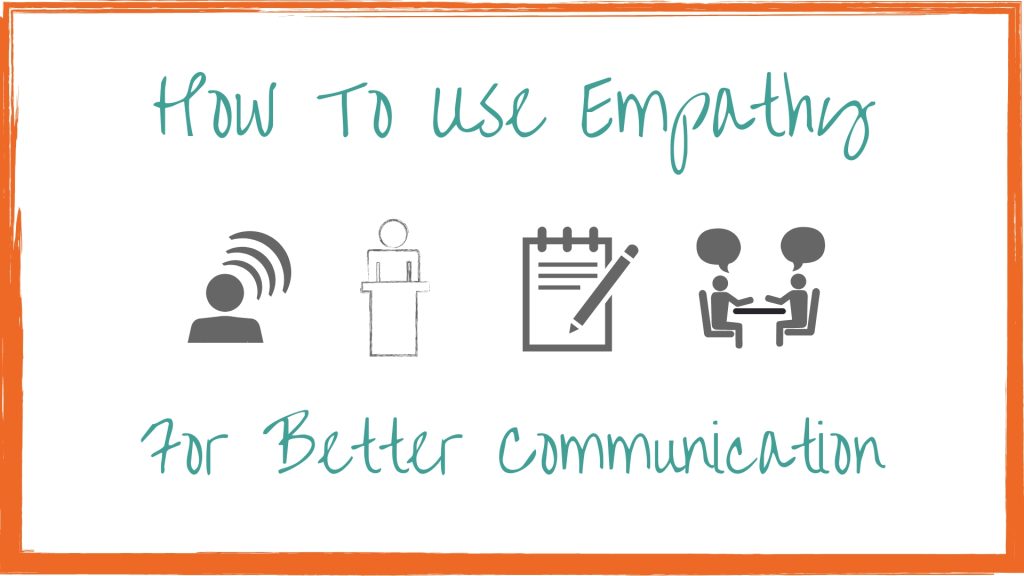Empathy is a foundational element of effective communication, enabling individuals to connect deeply with others by understanding their emotions, perspectives, and experiences. In this comprehensive guide, we explore the importance of empathy in communication, practical strategies to cultivate empathy, and how it contributes to fostering meaningful relationships in various contexts.
Understanding Empathy in Communication
Empathy involves the ability to perceive, understand, and share the feelings of another person. It goes beyond sympathy (feeling sorry for someone) by actively engaging with and validating the emotions and experiences of others. In communication, empathy plays a crucial role in building trust, enhancing collaboration, and resolving conflicts amicably.

Why Empathy Matters in Communication
- Enhanced Understanding: Empathy allows individuals to gain deeper insights into the thoughts, feelings, and motivations of others. By acknowledging and validating these perspectives, communicators can create a supportive and inclusive environment.
- Improved Relationships: Empathetic communication fosters trust, mutual respect, and emotional connection. It strengthens interpersonal relationships by demonstrating care, compassion, and genuine interest in others’ well-being.
- Conflict Resolution: In conflict situations, empathy helps de-escalate tension and facilitate constructive dialogue. It enables individuals to listen actively, acknowledge differing viewpoints, and seek collaborative solutions that meet the needs of all parties involved.
Strategies for Cultivating Empathy in Communication
Building empathy is a skill that can be developed and honed through conscious effort and practice. Here are practical strategies to cultivate empathy in communication:
1. Active Listening
Active listening is a cornerstone of empathetic communication. It involves giving full attention to the speaker, withholding judgment, and responding with empathy. Practice paraphrasing the speaker’s words to ensure understanding and reflecting their emotions to demonstrate empathy.
2. Perspective-Taking
Put yourself in the other person’s shoes to understand their thoughts, feelings, and experiences from their point of view. Consider their background, values, and life circumstances to gain a deeper appreciation of their perspective. This helps in forming genuine connections and building trust.
3. Nonverbal Cues
Pay attention to nonverbal cues such as facial expressions, body language, and tone of voice. These cues provide valuable insights into the speaker’s emotions and intentions, allowing you to respond empathetically and appropriately.
Benefits of Empathetic Communication
Practicing empathy in communication yields numerous benefits, both personally and professionally. Here are some key advantages:
Enhancing Personal Relationships
Empathetic communication strengthens bonds with friends, family, and romantic partners. It promotes mutual understanding, resolves conflicts peacefully, and fosters a supportive environment where individuals feel heard and valued.
Improving Team Collaboration
In professional settings, empathetic communication enhances teamwork and collaboration. It promotes open communication, builds trust among colleagues, and encourages diverse perspectives. Teams that prioritize empathy are more cohesive and innovative, achieving greater success in their endeavors.
Enhancing Customer Relations
Empathy is crucial in customer service and client relations. By understanding and addressing the needs and concerns of customers empathetically, businesses can enhance customer satisfaction, loyalty, and retention. Empathetic communication creates positive experiences and strengthens brand reputation.
Practical Tips for Practicing Empathy Daily
1. Cultivate Self-Awareness
Develop self-awareness by reflecting on your own emotions, biases, and communication style. Recognize how your actions and words impact others and strive to communicate with empathy and compassion.
2. Practice Empathetic Language
Use language that demonstrates empathy and understanding, such as “I hear you,” “I understand how you feel,” or “That must be challenging for you.” Validate others’ emotions and experiences without dismissing or minimizing them.
3. Seek Feedback and Learn from Others
Seek feedback from others on your communication style and empathy skills. Be open to constructive criticism and learn from their perspectives and experiences. Continuous improvement in empathy strengthens your relationships and enhances your communication effectiveness.
Conclusion
Empathy is a powerful tool in communication that bridges gaps, fosters understanding, and strengthens relationships. By cultivating empathy through active listening, perspective-taking, and nonverbal awareness, individuals can create meaningful connections and contribute to a more compassionate and collaborative society. Embrace empathy as a cornerstone of effective communication, and watch as it transforms your personal and professional interactions for the better.
